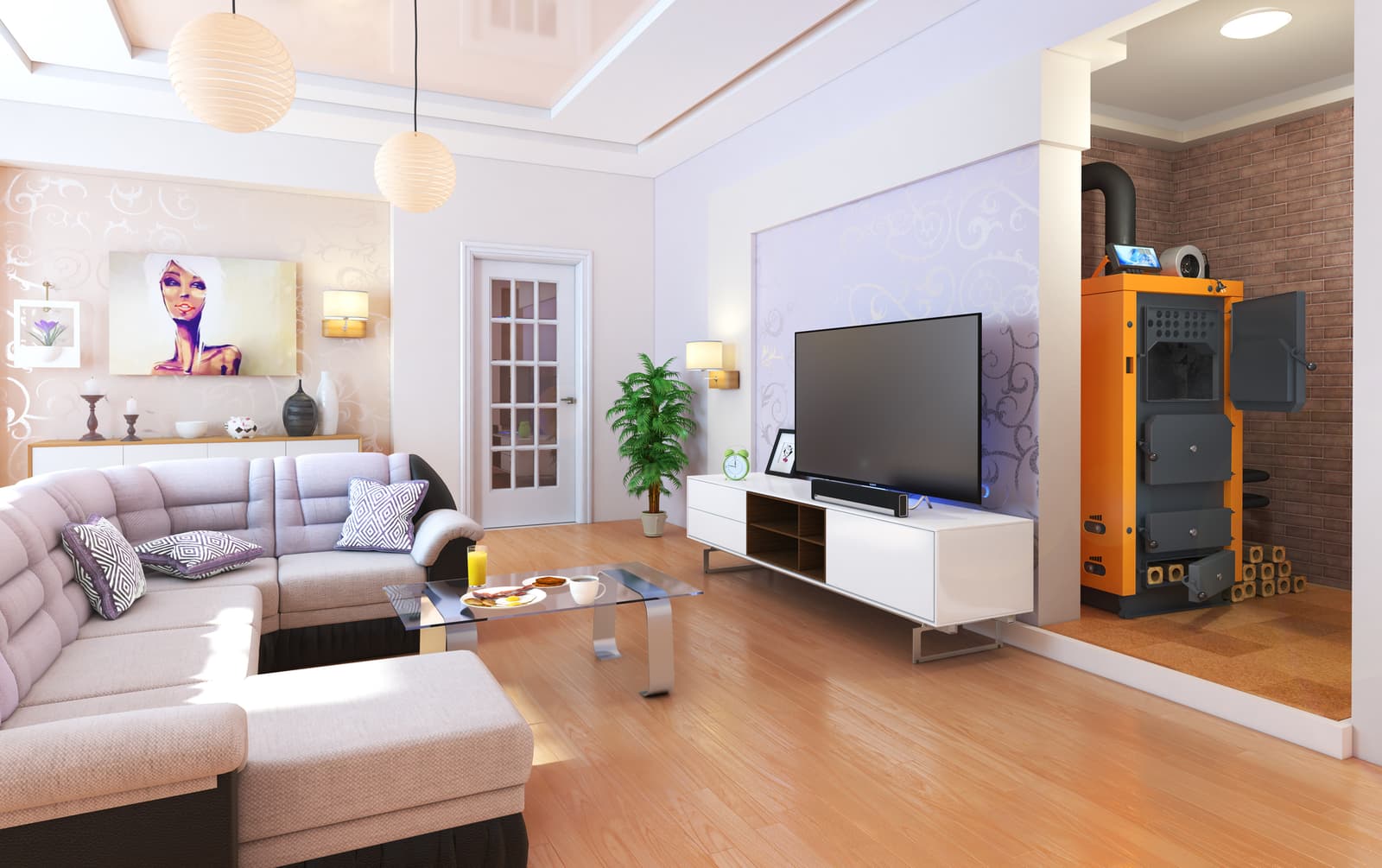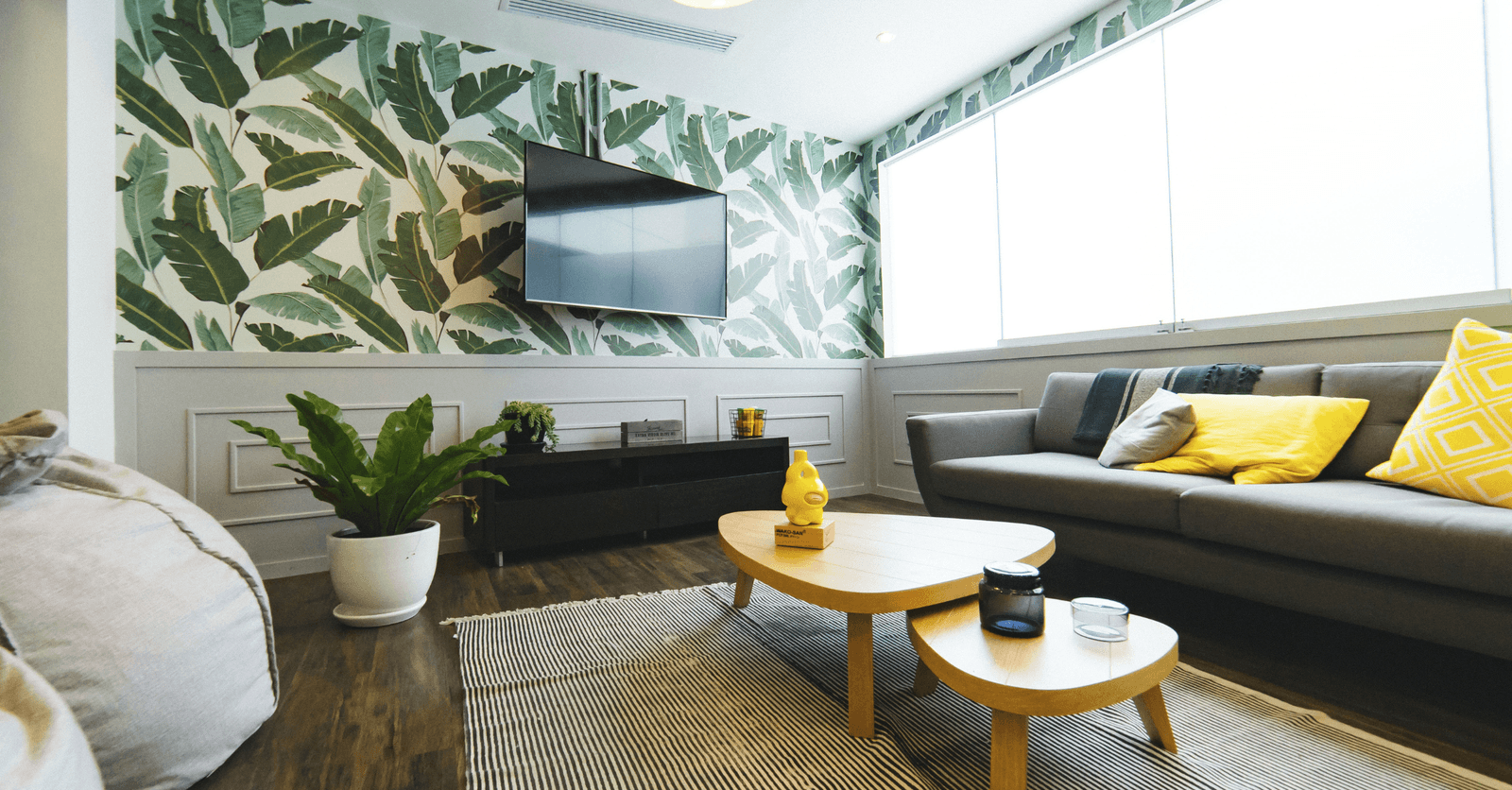Sanding Hardwood Floors - How to Go About It the DIY Way
By Editorial Team
Updated on June 16, 2025
Wood floors have an undeniable charm that can, without a doubt, highlight any decor. To showcase their entire potential, sometimes after years of wear, restoring them is the only route ahead. So, how can you conceal scratches and deep gouges and years' worth of foot traffic? Well, sanding your hardwood floors will restore their former gleaming finish.
What are the general guidelines for sanding hardwood floors? What tools and techniques should be used to carry out this task successfully? Discover the key steps (as well as some pro tips) for flawless sanding and refinishing.
DIY Project Guide: How to Sand or Restore Old Hardwood Floors

Floor Sanding Toolkit
Note that all tools and equipment can be purchased at your local home improvement store.
Belt sander
Sandpaper (different grits depending on the session)
Box cutter (retractable knife)
Putty knife
Crowbar/pry bar
Protective mask
Safety goggles
How to Prepare for Floor Sanding
The first step of your floor sanding project consists of removing all baseboard moulding using a pry bar. This is a rather tricky undertaking, so make sure to do so without haste. Start with a corner baseboard, one that forms a right angle between two walls. With the help of a knife with a retractable blade, pull back the top half of the baseboard from the wall. Then, insert the entire blade behind the baseboard to peel back the glue adhering it to the wall.
Next, grab a putty knife (ideally a small one) and insert it between the baseboard and the wall. Then, use a second putty knife, wedging it atop the first one, and bending it away from the former at a 45-degree angle. Afterwards, grab your pry bar, place it between the two putty knives and pull it towards you to peel the baseboard off the wall.
Keep going until all skirting boards are peeled off the walls. Before moving on to the next step, pick up all nails or staples from the floor’s surface.
What Is the Best Way to Sand a Wood Floor? Step-by-Step Instructions
The first official step of sanding work is done using a belt sander fitted with 60- or 80-grit sandpaper. You can also start with a coarser sandpaper (40-grit) if you deem the flooring especially damaged.
After sanding the middle of the floor, move outward, toward the walls using an orbit sander. Since this device operates clockwise, sand from left to right. As soon as you see that the sandpaper is losing its efficiency (this also applies to the belt sander), take a break and switch out the sandpaper for a new one. Lastly, use a corner sander to buff corners. Don’t apply too much pressure on the sanders, as doing so may damage your flooring.
What Sandpaper Grit Is Best for Refinishing Hardwood Flooring?
Wood floors are typically sanded in three sessions. A fourth one may be needed, but it’s not mandatory.
After the first session, additional sanding may be required, so adhere to the above-mentioned steps, but switch out the sandpaper for a different grit. Use 100-grit sandpaper for the second session. For the third one, use 120-grit sandpaper. Note that sanding the surface a fourth time may be required, but not necessary. For those looking to carry out professional-like efforts, note that the last sanding efforts should be done using an orbit sander fitted with 150-grit sandpaper.
A Few Pointers When Sanding Hardwood Floors…
Note that sanding floorboards that are less than three millimetres thick can be risky. Doing so could crack the planks. To avoid such an outcome, ask a professional if you’re unsure as to whether your flooring can be sandblasted.
Note that the sanding time will be cut short if you’re working with softwood (such as spruce) and much longer if working with solid wood, such as hardwood. Consider a few precautionary measures when planning out your sanding project and, when in doubt, call in a professional.
How Hard Is It to Sand a Floor?

Floor sanding isn’t as easy as it sounds, especially if you’re a novice. But, it’s not unfeasible if you have the right tools on hand and the proper guidelines to refer back to. Here are some handy pointers to help guide you along:
Pro Tips
Always sand with the wood grain, not against it.
Don’t idle in one spot with your sander; doing so risks digging into the wood.
Lift the sander's barrel whenever changing direction to avoid marking the wood.
Proper Ventilation Makes for a Hazard-Free Zone
Seal the area with plastic sheeting to prevent the sanding dust from spreading.
If need be, shut off your central ventilation system to avoid clogging the ducts.
Buy a protective mask to avoid inhaling dust while working.
Make sure the room is well-ventilated.
How Much Does It Cost to Sand Wood Floors?
If you choose the DIY project route, sanding your floors will cost you the price of renting a sander, so budget between $30–$100 per day. Should you choose to hire a professional to execute the work, budget roughly $3–$6 per square foot.
Here are some articles to peruse for more useful information about hardwood flooring:
FAQ Sanding Hardwood Floors
How can I restore hardwood floors?
Floor Sanding Steps | How to Proceed |
Initial steps | - Seal the area to prevent dust from spreading |
Floor preparation | - Remove the baseboards with a pry bar |
Sanding | - Sand with the wood grain |
What type of sandpaper is best used to revamp hardwood floors?
The sandpaper grit used depends entirely on the state of your parquet and the sanding session:
Use 60- or 80-grit sandpaper for the first session (40 if your floors are really damaged).
Use 100-grit sandpaper for the second session.
Use 120-grit sandpaper for the third session.
Should there be a need for a fourth session, use 150-grit sandpaper.
Can hardwood floors be restored without sanding?
To restore hardwood floors without sanding, start by deep-cleaning the surface, applying a floor polish and restorer specially designed for revamping the flooring in question. This method will work if the damage is surface level and there aren’t any deep gouges in the parquet.
What is the difference between a sander and a buffer?
The terms sander and buffer are often used interchangeably to designate the same type of machine. However, they can be distinguished as such:
A buffer is used for precision or finishing work.
A sander is reserved for more robust and industrial undertakings, designed specifically for intense restoration jobs done on large surface areas.
In any case, both tools carry out the same goal: removing the top layer of wood, varnish, or paint to prepare the surface for restoration. The choice of tool depends on the project at hand.
When to sand or replace hardwood floors?
Sanding is preferable if the flooring is still solid yet has minor scratches or shows signs of wear. However, replacing hardwood floors may come as the only solution if the flooring is too damaged or warped, or if structural repairs are needed.
How long do hardwood floors last?
Hardwood floors can last between 50–100 years, even more sometimes if well maintained. Flooring longevity depends on the quality of the wood, the daily wear, and maintenance, such as periodical sanding and varnishing to restore the surface.
Looking for something else?
Related articles
The latest industry news, interviews, technologies, and resources.

Editorial Team
•20 Oct 2025
Are you looking for a new, durable, aesthetic-looking, low-maintenance, and custom-made flooring option? Well, an epoxy floor coating might just be the best option for your next renovation project. Here’s everything you should know about installation and costs.

Editorial Team
•01 Dec 2025
Metal roofs, particularly pre-painted galvanized steel, are among the strongest and most durable on the market. They can last between 60 and 100 years, providing long-term protection for your home. Despite this durability, they remain susceptible to corrosion, temperature fluctuations, and weather conditions. Like any roof, regular maintenance is necessary to preserve both their efficiency and appearance.

Editorial Team
•17 Jan 2025
Has your son or daughter grown up a lot and their childhood bedroom isn’t cutting it anymore? Well then, it’s about time to redecorate their slice of heaven to revamp their bedroom according to their personality and the young adult they’re quickly becoming. Here are some ideas to serve as inspiration for your teenager’s future bedroom design project!

Editorial Team
•07 Nov 2023
Do you have a problematic front door lock? Whether this is a direct result of regular wear or an attempted break-in, there’s no doubt that you’re trying to remedy the situation as fast as possible. So here’s a rundown of the quick fixes available to you.

Editorial Team
•16 Jun 2025
Are you looking to learn more about the different types of interior wall covering materials? There are so many different options available that one can easily feel lost when faced with the idea of choosing one over another. In order to help you find the material that best suits your needs and taste, here is an overview :